Lava Tubes
Lava Tubes
structure
formation
features
extraterrestrial lava
tubes
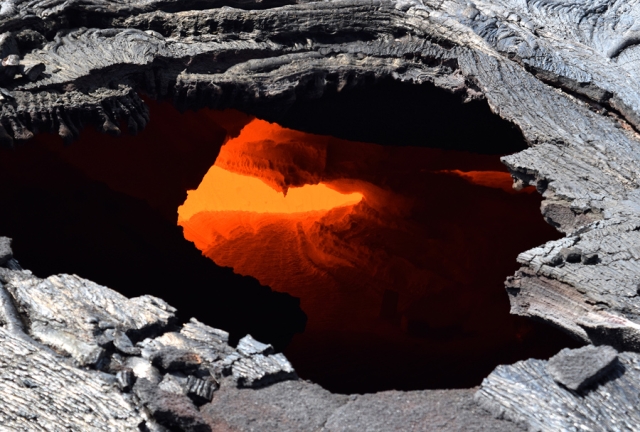
structure of lava tubes
Well-preserved examples of long lava flows exist in the young volcanic provinces of eastern Australia.Most voluminous are the flows of north Queensland, with the largest, the 190,000 year old Undara lava flow, travelling 160 km and covering anarea of 1550 km.
The Undara Lava Tube System, North Queensland, Australia, is remarkable not only for its geology, but also for unique flora and vertebrate and invertebrate fauna.
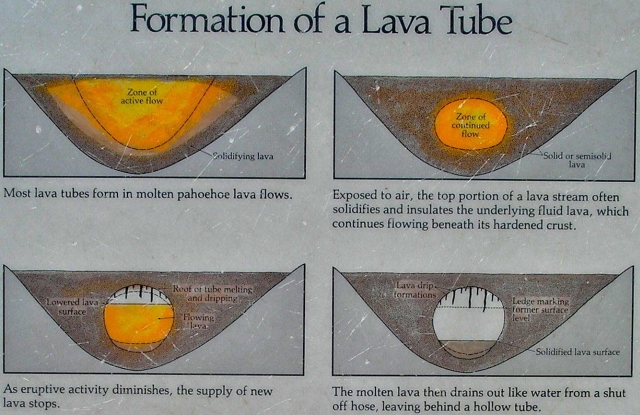
Primarily pahoehoe in morphology, the Undara flow is characterised by extensive single level lava tubes that aided the development of this long lava flow.
A prominent morphological feature of the flow is the 40 km long, 5 to 20 m high, 200 m wide "Wall" that is considered to lie above a lava tube (conduit) which occupied a former stream course at this location.
More than 60 caves and arches have now been discovered in the system. Most caves are less than 200 metres long but the system includes Australia’s longest lava tube, over 1,350 metres.
More than six kilometres of tubes have been surveyed and the first profile ever to depict a source volcano in addition to representative caves and arches is presented.
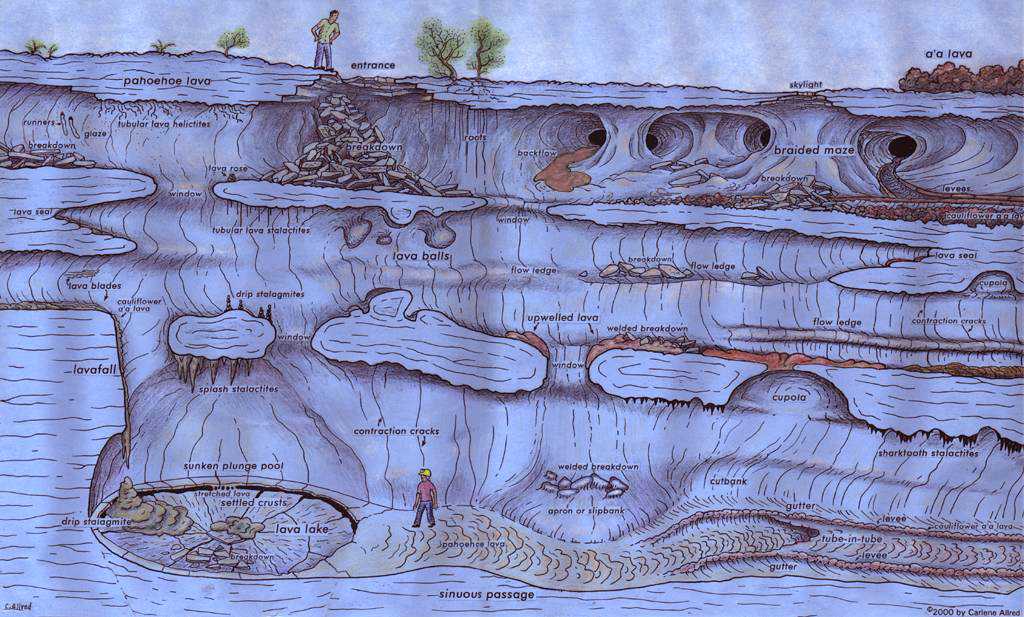
190,000 years ago, the Undara volcano erupted 23 cubic kilometres of basaltic lava at temperatures ranging from 1,170° Celsius to 1,220° Celsius, covering an area of 1,150 square kilometres.
With an average gradient of only 0.3°, one of the flows extended more than 160 kilometres to become the world’s longest ‘recent’ flow from a single volcano.
This great length is attributed to very high effusion rates, favourable topography, and lava tube efficiency.
The lava tube system extends more than 110 kilometres and includes caves, arches, and an almost level ridge that is 35 kilometres long and is known as “The Wall.”
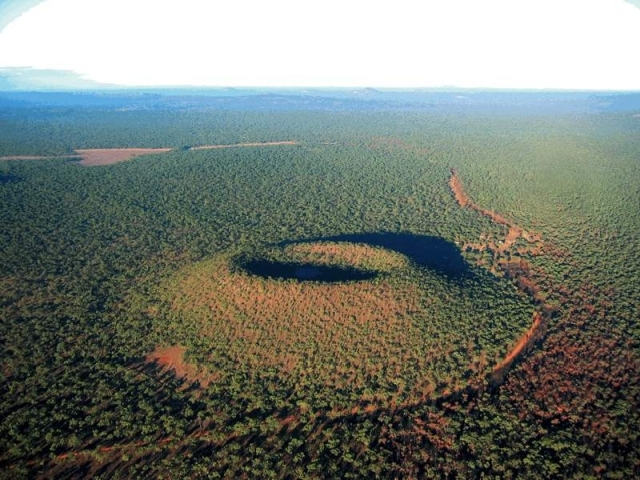
The Wall is considered the best Earth volcanic feature analogous to the smaller basaltic ridges on the Moon. Adjacent to, or aligned with, the caves and arches there are oval and elongate depressions.
Most of these depressions are much wider than the caves and arches and appear to have formed contemporaneously by the draining of lava ponds.
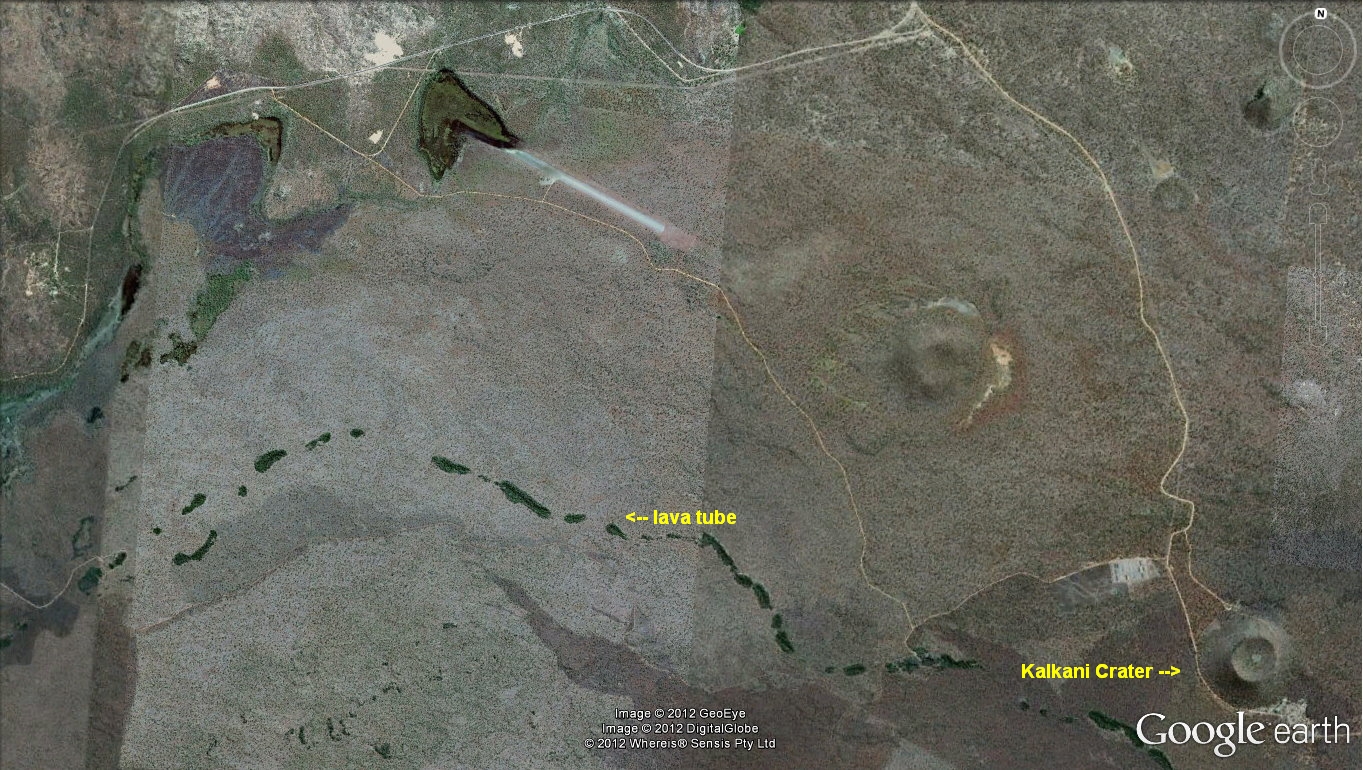
Darker green “rain forest” type vegetation within the wider depressions contrasts sharply with that of the surrounding eucalypt woodland and is indicative of former greater areal extent of rain forests, now confined to coastal and near-coastal areas. Comparison of features of the Undara tubes with those of currently active and Recent Period tubes elsewhere in the world, indicates that the tubes of the Undara System were formed by the draining of roofed lava channels, whose locations were determined by palaeotopography.
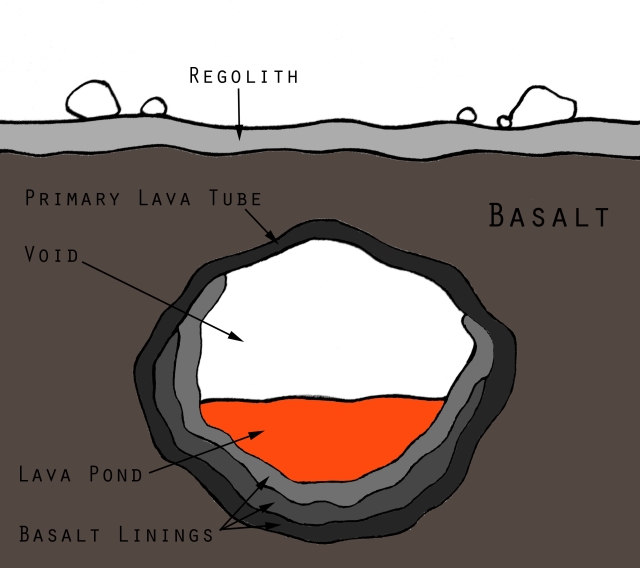
formation of lava tubes
A flow of runny basalt pahoehoe lava flows down a drainage. The edges and top, exposed to the air / rain cool, crust over and develop a roof and walls. The lava beneath continues to flow, now with a protective insulative barrier from the elements. At some point , the flow suddenly ceases and the lava drains its path - a lava tube is formed. The tube can be reactivated numerous times by subsequent flows provided that the source of the lava cuts off quickly and the liquid lava has time to exit and drain the tube. Once formed the tube facilitates the flow of lava further and further from the source, many kilometers is possible.There are a number of ways for the roof to grow. The semi-solid surface crust may thicken and stop (think of the filmy layer that forms on the surface of hot chocolate drinks) If the crust cools slowly , hexagonal shrinkage blocks will form the roof (thing of the shrinkage cracks in a mud puddle). Semi-solid blocks floating down the flow may pile up, jam and form a roof. Splashing and splattering add to roof thickness. As the walls and roof thicken the flow becomes concentrated and as long as the flow fills the tube the crossection remains circular.
features of lava tubes
As the flow diminishes and no longer fills the tube, volcanic gases from the flow may ignite at considerably higher temperatures causing re-melting and erosion of the roof and drips. The tube then takes on a more rectangular crossection often tending toward being narrower and taller. Tubes with a small flow only partially filling the tube can develop their own roof crust and when they drain produce false floors that are hollow underneath. When a tube drains quickly the last coating of lava on the sides cools quickly and can take on a glassy polished surface. If the sides of the tube are too cool this final lava coating can take on the form of thin crusty layers that peel off in curved sheets.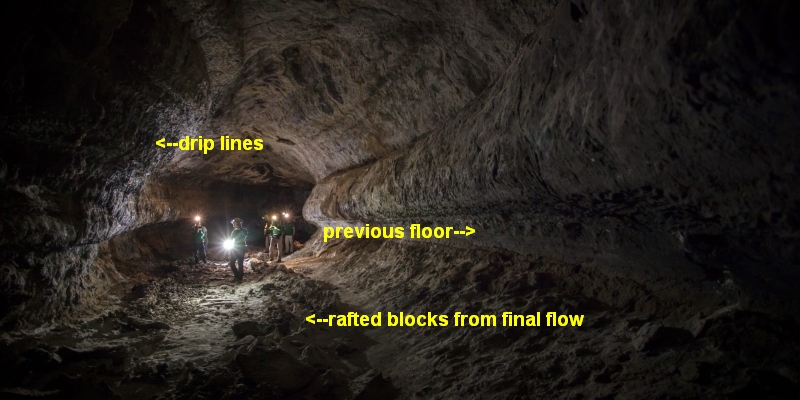
extraterrestrial lava tubes
Long lava flows on Earth are dwarfed by long planetary flows, which reach up to 1000 km on Venus, 480 km on Mars, and in excess of 400 km on the Moon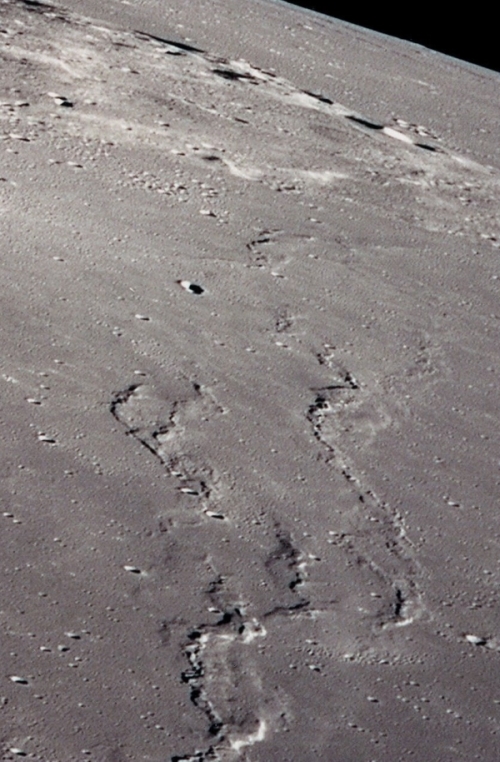
Lava tubes may provide a safe habitat on other planets.


